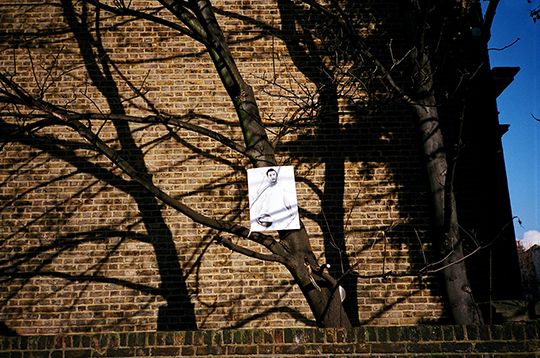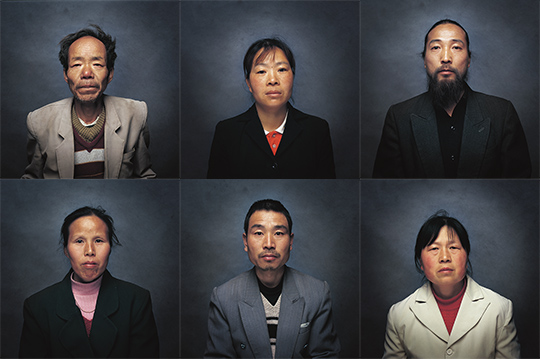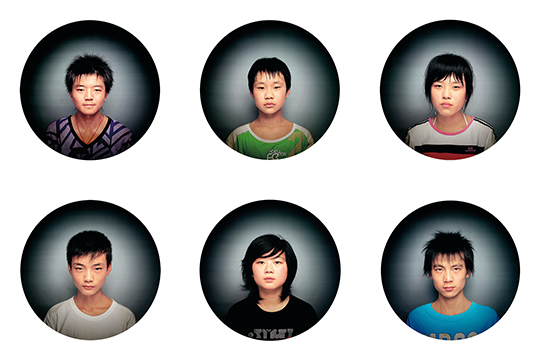α’s Art School Story
| February 23, 2015 | Post In LEAP 30
TRANSLATION / Daniel Nieh
The voices of actual students describing their experiences are generally missing from discussions of art school education. The following short story, by the young artist YK, provides a window into the various influences and pressures students face prior to signing up for the art school entrance exam, their subsequent entanglements with the inertia of conventional art education, the emergence of contemporary art in the academy, the art market, and the process of making exhibitions.

I
α LEARNED TO paint when he was very young. Because he possessed some natural talent, he developed a certain amount of confidence. Later on, due to incidents of puppy love and an enthusiasm for sports, painting fell by the wayside—along with schoolwork—for several years. In high school, he heard that the entrance exam for art school required less memorization than other exams. Recalling his childhood glories, he decided to sign up. At first his family was opposed to it, but his marks on the exam persuaded them.

α resolved to become a designer, but then he encountered a teacher in his exam prep class who had majored in oil painting. He learned from this teacher that he would have the opportunity to become an artist, and his adventurous spirit was at once aroused. So he changed his plan. Twelve years of half-hearted schoolwork had, due to various accidents of adolescence, been an exercise in mediocrity. Now he had gotten into university, and, more, could possibly become an artist. It was like he had suddenly awoken and become his own master. α didn’t know the first thing about art (at least, that’s how he came to see it in retrospect), much less whether to stick with oil painting or switch to contemporary art. But he had gone to art school for an adventure, so he figured that he might as well have the biggest one possible. This time, α’s family did not attempt to interfere. As far as they were concerned, going to university was the key thing—what major he chose there was secondary. αwas particularly excited by the unexpected cohort of like-minded classmates he found there, all hot-blooded and unrepentant. A mysterious, sustained agitation permeated their lives.
“Everyone listen up—this kind of painting has no future. You need to create your own style and find your own language to make a place for yourself in the art world and call yourself an artist. Now look at this student’s painting—it’s different from all of yours.”
Years after graduating, when α thought back to when he heard those words in his first year, all the hairs on his body stood on end. It was like awakening from a nightmare both realistic and uncanny: the same marriage, the same house, the same room, the same baby, but he himself had switched genders, and everything was suddenly wrong.
At α’s former art school, all first-year students had to take a course in painting fundamentals together. It was just as overblown as the exam prep class had been, except that the lecturers would sometimes talk about much more exotic subjects—so exotic that they seemed to include magical incantations.
(This narrative might be a little exaggerated. Would we expecta teacher to speak this way in the classroom?)
It must be said that these spells and incantations led many first-year students to redraw their blueprints of the future. Some, evidently, could paint pretty well, and began wondering how they might paint more poorly. Those who couldn’t paint well abruptly became self-confident, feeling they had discovered their path. Others were scared stiff and immediately switched majors.
Becoming an artist meant giving up on ordinary life—of having everything you could wish for. Looking back, it seemed that many people at the time thought becoming an artist was a modest enterprise of steady income. α was skeptical. Had he and his classmates heard something wrong?
Certainly, few young people in those days had any concept of investing—very few indeed, if they were art students like α. They were afraid of failure, but not hardship. Without being told, they thought about fundamental material needs, risk and reward, delayed gratification, and economic efficiency. It’s no exaggeration to call them the most economically minded generation in history, but when faced with decisions they also weighed their past and future. Making friends only takes a day, but parting ways takes half a year. It was students like these who proclaimed—with straight faces and calm hearts—that they planned to become artists, to make art.
II
On the basis of his adventurous spirit, or perhaps because of certain other providential circumstances, α switched his major from painting to contemporary art in his second year. To this day, he still clearly remembers the profound smile on his advisor’s face after he made his announcement.

His new professor, a man of prestige and noble character, had lived abroad—for more than 20 years, it was said—and returned overseas to teach at his alma mater when most people his age were planning for retirement. Right off the bat, he warned his young students: “It’s not an easy road to follow. If you chose contemporary art in order to live the good life, then I suggest you change majors immediately.” But this splash of cold water did not extinguish the exuberant passion in their young hearts, nor did it scare off the ones who sincerely intended to live the good life. As for why the old professor had chosen a splash of cold water and not a whole bucket, well, there are a number of theories. The most reasonable one is that, although these young people were students, they still had to be responsible for their own decisions, and whether they made it or not was entirely up to fate.
Everyone showed up on time for the first class—but that was the only time. Contemporary art was not like other disciplines, in which teachers could recite from a textbook, nor was it like painting or sculpture, in which students practiced and learned simultaneously. Most of their time was spent absorbing the old professor’s words of wisdom, and students studied the fundamental concepts and histories entirely outside of the classroom.
The professor opened the class by asking everyone to chat casually, but nobody seemed to feel relaxed. When α’s turn came, he felt that avoiding the conversation was impossible, so, in a moment of desperation, he squinted his eyes and recalled that maxim from his first year:
“You must create your own style, and possess your own language, to make a place for yourself in the art world and call yourself an artist.”
As he spoke, he felt his body begin to relax and his eyes shine. But the old professor only laughed and said something that made α’s stomach sink: “Complete nonsense!”
“Being an artist is not an identity. It is a state. The stuff on the surface can at most make you resemble an artist more than other people, but what really matters is your inner being. You must understand your own inner being and discover what it is that genuinely interests you before you can set foot on the art path and possess the fortitude to continue walking. Only then will you be a true artist. As for style, language, and whatnot—it’s complete nonsense.”
He then informed everyone that they would spend the next three years figuring out what it was that genuinely interested them—this would be the basis on which they could develop their own creativity.
α felt a nameless sense of grievance after being chastised in this way. The old professor pulled out a magazine and said: “The artist in here recently graduated from this university. Now he’s in the capital. At the time, I told him not to rush, but never mind that—he’s doing pretty well.”
α eyed the magazine intently. “An up-and-coming talent, he recently signed a contract with a famous gallery,” the professor continued. Just like that, α’s sense of grievance vanished.
Right after class was dismissed, α and his classmates began silently seeking what genuinely interested them. They did not realize that this search would prove interminable.
Ordinarily, when someone asks what you’re interested in, you might say: chasing girls—or only looking, not chasing—or maybe watching Korean TV dramas, or American ones, or Japanese ones, or Hong Kong ones, or eating delicious food, or photography, or amusement parks, if not fame and wealth, trying new things, Batman, that kind of thing. But if the person asking the question was your teacher—an art teacher no less—you would probably think a while before answering. In any case, α deliberated for more than a while, and more than once.
Last year’s search for his own style meant being different from others. If that was nonsense, then would finding what he was genuinely interested in automatically make him stand out? If what he was interested in was getting in car accidents, would he have to find something else? What if being different from others was what he was interested in? What would that prove? And if he was the same as the others, could he still become an artist? Really, who was it talking nonsense? In a serious mood, α examined himself in the mirror. He did not experience any profound revelations, but for some reason he thought of getting an X-ray at the hospital.
The old professor said that becoming an artist required both a bit of talent and a great deal of knowledge. He often reminded his pupils to read, and, at irregular intervals, provided them with reading lists, which naturally included art history.
Subsequently, most of the students, including α, began to notice gradual changes in their interests. Those who were previously concerned with food safety found themselves extremely interested in theories of the subconscious; those who originally planned to study illusion shifted their focus to the origins of the cosmos; and those who were intrigued by death unexpectedly became fascinated by the society of the spectacle. Oddly enough, these shifts seemed to follow certain patterns. The old professor looked into their eyes, but how could he tell which students were faking it?
As these students continued to run in circles, they didn’t produce a single work of art.
“The key is to find the subject that suits me the best. I don’t want to act too hastily and ruin everything.”
“My idea is too expensive. I can’t execute it right now.”
“I haven’t read enough, so I can’t create a work with depth.”
Some of the students tried to come up with an idea or two relating to their temporary interests (only a few actually made anything), but most of them barely scratched the surface. Later, even when someone came up with a really flashy point of interest, the old professor would just roll his eyes and say, “We’ll talk about it after you produce something.”
Providing guidance on the road of self-exploration seemed fruitless, so the old professor opted to merely observe. But he couldn’t tolerate students producing almost nothing over the course of a year, so he pressured them to produce one or two projects, good or bad, even though no one could remember how they came up with the ideas.
III
α began formally studying oil painting in another of his second-year classes. This professor had his own famous studio. Through their young eyes, the students saw the man standing in front of them as someone who could sell half a painting for the down payment on a mansion. The keenest students could list the prices of the various luxury brand items that adorned his body. They rubbed their palms together, eager to get cozy with him as quickly as possible. Who would have expected that he would leave the classroom to take a phone call before he had even completed his opening remarks? By the time he came back, the semester was well underway.

The young assistant professor filling in for him directed everyone to paint, reciting incantations that differed little from those of their foundation course:
“Everyone, look at this painting: it has a lot of style. You won’t find one like it in the history of art. Get it? If you want to go down in history, you have to have your own ideas.”
Afterwards, α bought an art history textbook and discovered that the young assistant professor had not, himself, been able to go down in history. He pitied him, and, before long, this pity was sublimated into a disdain that spread among his classmates. As α understood it, the assistant professor had already accepted the inevitable, and would never become a great painter.
Thereafter, it would be no exaggeration to describe the class as pandemonium. By the end of the semester, each student had produced a series of works. The design majors were still studying software and thrilled about downloading templates illegally, but students in the oil painting department were already devoting a great deal of practice to the development of their own brands.
IV
Along with a few other classmates, α got a chance to show his work outside of school during his third year.
.jpg)
“Hello, α, I think your work is pretty good, and it so happens that we’re working on an exhibition here. The theme is XXX. We need some young artists who are still in school. Are you interested?”
The moment that the curator descended from the sky and said the words “young artist,” a feeling of accomplishment filled α’s heart.
Even though it was a new art space he had never heard of, even though he had to arrange even the transportation of the work himself, and even though the curator did not appear to have a degree in art history—so what? As α’s tastes became more discriminating, his social circle grew smaller and smaller. More and more of his classmates were excluded, and so were most of his professors.
From within this circle, he came up with a set of creative principles: one must have style, and one must be wary of echoing others in theme and in medium; one must be daring, whether in volume, material, or scale; one must have continuity in order to enhance thematic strength. α soon forgot exactly how many principles he had, but he remembered how excited he felt each time he invented one, as if he were gradually tightening his grip around art’s throat. But opportunities for exhibitions didn’t come along every day. Limitations of budget, energy, and scale prevented him from putting on his own exhibition, and so most of his plans remained only that: plans.
After the graduation exhibition, α naturally accepted his status as an artist.
After many years had passed, more than a few of his classmates had changed professions. Whether they had gone into business or into the mountains to become monks, no one else knew about that brief moment of splendor during their third year of art school.

